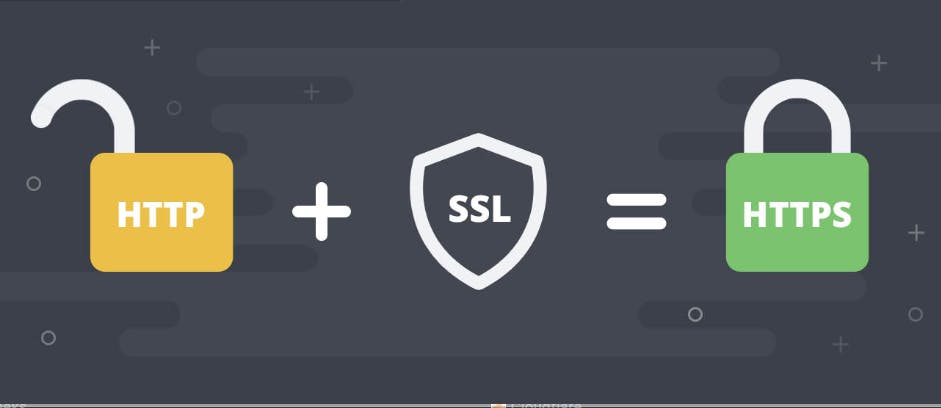"The Importance of Understanding HTTP and HTTPS: How to Keep Your Data Safe and Secure Online"
Table of contents
- What is HTTP and how does it work?
- What is HTTPS and how it is different from HTTP?
- How to tell if a website is using HTTPS and what to look for in the browser address bar?
- Common misconceptions about HTTP and HTTPS and how to dispel them.
- Examples of real-world scenarios where understanding the difference between HTTP and HTTPS can protect users' data.
- Tips and best practices for staying safe and secure online.
In today's digital age, we rely heavily on the internet to access information, communicate with others, and conduct business. With the increasing number of online transactions and sensitive data being shared over the internet, it's more important than ever to understand the basics of HTTP and HTTPS protocols and how they can affect the security of your online data.
In this blog, we will discuss the importance of understanding the differences between HTTP and HTTPS and how to keep your data safe and secure online. We will also explore the different ways that you can use HTTPS to protect your online data and the benefits of doing so. With the increasing number of cyber-attacks and data breaches, it's crucial to take the necessary steps to protect your personal and business information from falling into the wrong hands.
What is HTTP and how does it work?
HTTP or Hypertext Transfer Protocol is an application layer protocol for transmitting hypermedia documents, such as HTML, etc. It was designed for communication between web browsers and web servers. It does not have built-in security mechanisms for the data being transferred. So the information sent over HTTP is vulnerable to attacks and can be intercepted by anyone.

When you enter a URL into a browser, the browser sends an HTTP request to the server, which includes a method, a URI and headers. The server processes the request and sends an HTTP response, which includes a status code, headers and the requested resource.
What is HTTPS and how it is different from HTTP?

HTTPS( Hypertext Transfer Protocol Secure) is a variation of HTTP protocol that adds an extra layer of security by using SSL/TLS(Secure Sockets Layer/Transport Layer Security) to encrypt data being transmitted between the client and server.
The main difference between HTTP and HTTPS is that HTTPS uses a secure SSL/TLS connection to encrypt the data being sent and received, while HTTP does not. Additionally, HTTPS uses port 443 instead of port 80.
How to tell if a website is using HTTPS and what to look for in the browser address bar?

To tell if a website is using HTTPS, look for the padlock icon or "HTTPS" in the browser address bar. In most web browsers, a padlock icon will appear in the address bar when you visit an HTTPS website. The padlock icon indicates that the connection between your browser and the website is secure. Additionally, the URL of the website will begin with "HTTPS" instead of "HTTP."
Common misconceptions about HTTP and HTTPS and how to dispel them.
"HTTP is not secure": This is not entirely true. While HTTP does not encrypt data, it is still used for many websites that do not require sensitive information to be transmitted.
"HTTPS is only for sites that handle sensitive information": While HTTPS is often used for sites that handle sensitive information, it can also be used to improve website security, performance and search engine optimization.
"HTTPS will slow down my website": HTTPS may cause some additional latency, but it is minimal and does not affect much to the performance.
"HTTPS is only for large websites and e-commerce sites": Any website can benefit from HTTPS regardless of its size, type or the amount of sensitive information it handles.
Examples of real-world scenarios where understanding the difference between HTTP and HTTPS can protect users' data.

Online Shopping
Online banking
Social media
Online forms
Public Wifi.
Tips and best practices for staying safe and secure online.
Use a strong, unique password for each of your online accounts, and consider using a password manager to generate and securely store them.
Keep your computer and mobile devices updated with the latest security patches and software updates.
Use a firewall to protect your computer and network from unauthorized access.
Use HTTPS when possible. Look for the padlock icon or "HTTPS" in the browser address bar, to make sure the website is using a secure connection.
Use a VPN (Virtual Private Network) when using public Wi-Fi to encrypt your internet connection and protect your data from being intercepted.
Be cautious when clicking on links or downloading attachments from unknown sources.
Use reputable antivirus software and keep it updated.
In this blog, we have discussed the basics of HTTP and HTTPS, and how understanding the difference between them can help protect your data online.
If you liked it and it helped you to gain some useful knowledge then do share it with your friends and also ask them to be aware while surfing online as an security concern.
I will be coming up with the most amazing blogs shortly. So stay tuned! Also would be happy to know your reviews!
Thank you 💗